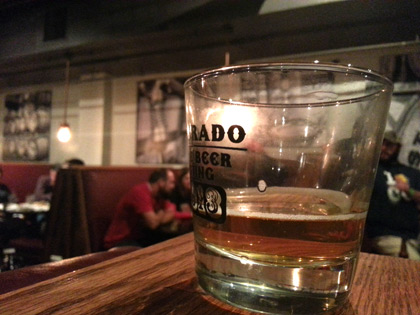 About this “Craft Beer Bubble” thing, I just don’t know.
About this “Craft Beer Bubble” thing, I just don’t know.
Host Derek Harrison has made the topic for The Session #80 intentionally ambigious: Is Craft Beer a Bubble?
Do we have to be able to define “craft beer” to move on? If so, we’re screwed. How about bubble? Economists don’t agree, but allowing for some vagueness in the terms used in forming the definition a bubble occurs when the perceived value of an asset exceeds its logical underlying value.
Not surprisingly, bubbles are much more easily spotted in retrospect, like the Tulip Bubble (or Tulipmania), the Mississippi Bubble, the South Sea Bubble, the Housing Bubble, or the Dotcom Bubble. The thing is none of these revolved around consumer goods, which is what beer is.
Granted the idea there is a premium pricing bubble has been getting some play recently, and that it could burst. That’s different than what happened in Holland (Tulipmania) or Silicon Valley, but it should worry breweries who need to get a higher price for beer than, say, what consumers pay for Budweiser. “Need to” not because they are greedy but because making beer less efficiently is cooked into their business plan.
Think of it another way. Shouldn’t anybody starting a brewery in America consider the fact that there’s basically no overall growth. Do we really need more brewing kettles, fermentation tanks and bottling lines?
That sobering thought aside, there’s good reason to believe that in the next several years breweries will make more beer that sells for more because it has more flavor (or at least different flavors; allowing for pumpkin beers and orange shandies). How many of those breweries — so a bubble? — there will be is tougher to say. Now we’re talking business plans and personal aspirations.
So we come back to the fact this is in large part a business story, and a different story in the England than North America, different in Germany than in Italy, different in New Zealand than South Africa, different in [pick a country] and [pick a country]. Yesterday Alan McLeod pointed to a story about three buddies opening a Belgian beer cafe in Hyderabad. It appeared in the food section of The Hindu, discussed history, culture and of course aspirations, but ultimately it is about a business, one that will succeed or not.
The story extends beyond brewers (the people with aspirations) and breweries (the businesses). There are liquor store owners, cicerones, bar owners, people selling equipment to bar owners …. a long of list that wouldn’t be complete without the people who grow our beer. Relatively small barley growing (and malting) and hop growing operations have sprung up in all sorts of places with the idea they’ll provide local ingredients for smaller, regional brewers. They have no chance of succeeding unless small brewers do as well. They can’t compete on price.
Farmers in the traditional beer growing regions have a similar rooting interest. One hundred years ago breweries used 12.6 grams of alpha to produces a hectoliter of beer, and today they need 4.1 grams. In contrast, breweries the Brewers Association classifies as “craft” use 5 to 20 times more hops per barrel than the world’s best selling beers.
Hop farmers would sure like to know how much hops those breweries are going to want five years from now and what varieties. They’ve got serious investment decisions to make. When I was in the Northwest last month I don’t think I had a conversation with a hop grower that didn’t include some variation on the question of “Will craft keeping growing?” or “How much more can it grow?”
They are usually third, fourth, even fifth generation farmers. These are good times for those who a few years ago committed themselves to serving smaller breweries, but if they haven’t experienced harder times they’ve heard about them.
“The mid-’80s was a difficult time for hop farmers,” said Eric Desmarais, himself fourth generation. “My mom and dad did everything they could to discourage me, but since I was 13 I knew this is what I wanted to do.”
He has the land to plant additional acres of the varieties small brewers particularly want, but he’d need to invest about $750,000 in his kilning facility to be able to process them properly.
“When will it end? How will it end?” he asked, referring specifically to the demand for hops but therefore generally about the beers that include them in above average quantities. “There’s a trail of tears after every one (hop boom).”

 About this “Craft Beer Bubble” thing, I just don’t know.
About this “Craft Beer Bubble” thing, I just don’t know.